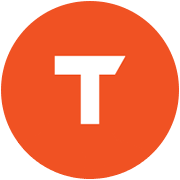
Landing a data science role is not just about familiarity with Python or machine learning algorithms. Thousands of applicants might have similar skills. What separates the good from the great is how you can showcase your skills in a portfolio. That’s why, in one of the most competitive fields in tech, your portfolio is the most powerful differentiator.
Some of the most competitive roles in tech today are data science jobs. According to a tech layoffs study, data scientists constituted only 3% of those laid off by major tech companies, while other tech workers, like software engineers, accounted for more than 22% of the layoffs (Source: 365DataScience). That’s how crucial data scientists are in our data-dependent world. The data scientist and analyst roles are expected to grow by 54% between 2025 and 2030 (Source: World Economic Forum). This clearly shows the bright future of data science professionals.
For those who are fresh out of college or are looking for a dream job in data science, your portfolio will be the biggest differentiator. Being able to score against other candidates who are vying for the same job requires a strong body of work that shows your skills.
From Netflix’s recommendation engine to Spotify’s playlist customization, everything is powered by data science. Every click that you make generates invaluable information. Analyzing and acting on such data marks the difference between a successful company and one that isn’t. This is why data science jobs are one of the hottest in tech today, since every organization needs them.
In this guide, we will teach you how to create an impressive data science portfolio that can get you the data science job you want.
Why Your Data Science Portfolio Is More Than a Showcase
Data science will grow in stature as it will sit at the core of decision-making across industries. Every company is looking at ways to derive value from data. With the rise in demand, there is increasingly high competition. To get the best of the offers, one needs to have a standout portfolio. You want to show a compelling data science portfolio that tells your story. This story must highlight your ability to apply techniques, tackle real business challenges, and how you can evolve continuously.
At Tredence, we don’t look for a stack of certificates and courses attached to your name. Instead, we look at how well you can execute. Can you extract insights from messy data? Would you be able to translate the insights into real solutions? Your portfolio should be able to communicate that to the hiring manager.
-
Build a Structured and Navigable Portfolio Page
Think of your portfolio as the landing page for your career. That’s how impactful it must be. Before deciding if they would like to learn more about you, recruiters are merely going to glance at your portfolio for a few seconds. For you to go to the next stage, it is imperative that your portfolio must be clear, well-organized, and visually pack a punch.
Here’s what to include in your portfolio:
- A brief introduction about yourself and your focus areas
- Clear project navigation with categories and filters
- Links to GitHub, LinkedIn, CV, and other relevant profiles
- A one-sentence summary, for each of your projects
Remember this, a clear and navigable portfolio shows your clarity of thought, a key trait that companies will look for in data scientists. Treat your portfolio as an interactive resume that is optimized for user experience.
-
Show a Variety of Projects Across Techniques and Use Cases
Employers look for portfolios that show versatility.. Avoid showing multiple variations of the same type of analysis. Instead, showcase your proficiency across different data science techniques and their application in various use cases.
Below are suggested project categories:
- Exploratory Data Analysis (EDA), which shows your ability to uncover hidden patterns and outliers
- Predictive Modeling demonstrates regression, time-series forecasting, or anomaly detection abilities
- Natural Language Processing (NLP) projects that involve text data, such as sentiment analysis, topic modeling, chatbots, and text summarization
- Visualization projects that result in interactive dashboards or comprehensive reports. It demonstrates your ability to communicate insights effectively to non-technical stakeholders
Pick industries that you are curious about. If you are looking to land a data science job, try having some real time experience in Retail, Banking & Financial Services, CPG, Telecom, Media & Tech, Travel & Hospitality, Manufacturing and Healthcare & Life Sciences verticals as Tredence caters to these industries. Seeing portfolios that are relevant to these domains will help you stand out.
-
Think End-to-End: From Problem to Deployment
A big difference between an average data scientist from a great one is their ability to think end-to-end. It means the ability to understand the entire lifecycle of a data science project, from the time the problem is framed to its eventual deployment and monitoring.
At Tredence, our work is a reflection of the real-world pipeline, and this is something we look for in candidates while hiring. We don’t just want to see that you run algorithms. Instead, we want to understand your problem-solving process.
Your portfolio project should clearly show this journey:
- Do you understand the business context?
- How do you frame the problem?
- How do you collect and clean the data?
- How do you arrive at insights
- How do you identify patterns and create new features that improve the model’s performance
- You should be able to justify your choice of algorithms and discuss the tradeoffs that were considered
- Show how to deploy your model
- How do you communicate the results to stakeholders?
The ability to showcase end-to-end thinking shows your technical proficiency and your strategic mindset. The hiring manager will gauge that you can see the bigger picture.
How to show end-to-end skills:
- Include process diagrams
- Annotate every step in your Jupyter Notebooks
- Share your approaches and learnings, even the ones that didn’t make the final version
-
Write Clean, Reusable, and Well-Documented Code
Your code’s quality shows your professionalism and the character of your work. It helps with collaboration and ensures maintainability. It allows others to build upon your work efficiently. When presenting your scripts, notebooks, and modules, make sure they are ready for team handoff.
At Tredence, we look for the following:
- Complex tasks broken down into manageable functions
- Well structured projects with clear headlines, logical flow, and minimal boilerplate code
- Well organized repositories with clear history, branching strategies, and a file structure
- Relevant comments that clarify complex logic
- A `README.md` file for every project ( it is often the first thing that a recruiter will look at)
Demonstrate your experience with GitHub projects for task management or GitHub actions for continuous integration/continuous deployment (CI/CD) pipelines. It shows your understanding of software development best practices in a data science context.
-
Tell Stories With Data
Translating complex analytical data into simple, actionable insightsfor businesses is one of the most valuable skills that data scientists must have. Your portfolio should include details that show how you can weave stories from raw data. Be mindful of how you present your results.
At Tredence, we don’t judge your results by RMSE or F1 scores. Business relevance is always the winner.
Here’s how to showcase your storytelling ability:
- Use charts, graphs, and dashboards to communicate complex information. Matplotlib, Seaborn, Plotly, and Tableau are excellent tools for this
- Build interactive dashboards to present insights
- Include presentations or reports you’ve created to convey your findings. It can be in the form of a PDF, a link to a web-based presentation, or a Markdown report
- Quantify the business outcome of your projects
A model with even a 99% accuracy is not useful if its insights cannot be understood by the relevant stakeholders. This is where your ability to indulge in storytelling is of great help.
-
Add Domain-Relevant Projects That Show Industry Understanding
If you can demonstrate your understanding of specific industries, you can significantly increase the value of your portfolio.
Here’s how you can add domain relevance:
- Try demand forecasting for retail
- Use time series to map supply chain delays
- Build customer segmentation using behavioral clustering
- Identify customers who are at risk of leaving a service in telecom
- Credit risk assessment of BFSI customers
When you show projects within particular domains, it signals to your interviewers that you possess technical skills and understand their unique business challenges.
-
Use GitHub or GitLab With Version Control
For teams to collaborate without any friction, version control is necessary. Your GitHub or GitLab profile is an extension of your portfolio. They show your coding practices, your project organization, and your ability to work within a version-controlled ecosystem.
Make sure your repositories are:
- Public so that they can be viewed by the hiring managers
- Organized with clear folder structures and appropriate branching strategies
- Updated with regular commits with descriptive messages
- Highlighting your contributions to open source projects
-
Show MLOps Awareness or Deployment Readiness
Having a basic awareness of MLOps, can act as a huge differentiator and add respectability to your data science portfolio. Even if you have never worked on large-scale production systems, all you need to do is show an understanding of the deployment phase.
Consider including the following to show MLOps awareness:
- Deploy a model as a simple web app through Streamlit, Flask, or FastAPI
- Show how you would test your model in a production-like environment
- Mention how you will monitor your model’s performance after deployment
- Show how you would manage different versions of your model
- Document dependencies, data sources, and the exact steps followed to show reproducibility of your projects
-
Showcase Continuous Learning
Despite new algorithms, tools, and techniques emerging at a never-before-seen rate, remaining relevant and effective as a data scientist is possible and requires dedication. Your portfolio should reflect this dedication. At Tredence, we look for people who never stop learning.
Here’s what signals continuous learning:
- MOOCs, workshops, and courses you have participated in
- Data science hackathons and competitions you have been a part of
- Personal projects that you have taken up
- Contributions made to open-source data science libraries
- Your writings on data science topics on a blog or platforms like Medium
-
What Tredence Looks For in a Data Scientist
We hire data scientists who show initiative, have curiosity, and possess clarity of thought. Data scientists who thrive are those who not only possess the technical acumen but also understand the business side of things. Data science resume for freshers must showcase their initiative and curiosity. Even if you have only a limited professional experience, the above traits are highly impactful.
Even after you become a part of Tredence, your learning never stops. The Tredence Academy of Learning (TAL) program is designed to accelerate your career growth and provide you with several opportunities to upskill. It also offers mentorship and gives you the chance to work on exciting data science projects.
Are you all set to test your data science skills with real-world projects? Explore the open positions at Tredence and learn how the TAL program accelerates your growth.
FAQs:
-
What does a strong data science portfolio include in 2025?
In 2025, a strong data science portfolio looks beyond technical projects. The portfolio should demonstrate your ability to work with real-world data and solve complex problems with the help of data analysis techniques.
-
How to make my data science portfolio stand out to employers like Tredence?
The ability to solve real-world business problems using data science is the most important skill that employers like Tredence are going to look for.
Here are a few more ideas that you can add to your portfolio:
- Blogs you have written on the topic
- Include domain-specific data science projects you have worked on
- An introduction to your skills, projects undertaken, and area of interest
- Create your data science portfolio website
-
Is GitHub important for a data science career?
Yes, GitHub is extremely important for your data science career. It’s great for collaboration, reproducibility, and version control.
-
What kinds of projects should I include in my portfolio?
Techniques such as EDA, predictive modeling, and NLP are the kind of projects that you can include in your portfolio. These projects must be spread across various use cases, industries, and business problems.
-
Does Tredence hire freshers or early-career data scientists?
Yes, Tredence does hire freshers and early-career data scientists. While we do value experience, we place great emphasis on a strong foundation in data science principles. A well-crafted data science resume for freshers can improve your chances of getting hired at Tredence.

AUTHOR - FOLLOW
Editorial Team
Tredence
Next Topic
How Trade Promotion Optimization Powers Smarter, AI-Driven Retail Decisions
Next Topic




